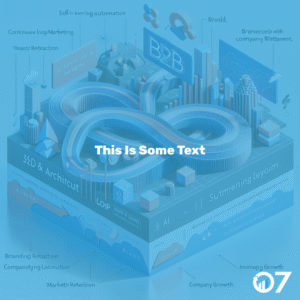Meeting agenda examples can transform your meetings from chaotic to productive. By using them, you ensure every meeting is focused and efficient.
In the early days of my career, I struggled with conducting meetings. My team was new, and meetings felt like a waste of time. Questions flew around randomly, objectives changed constantly, and we never reached helpful conclusions. Despite their importance, those meetings achieved nothing.
Research shows I’m not alone. Even in 2024, 71% of professionals feel meetings are unproductive. Enter meeting agendas. A solid meeting agenda revolutionised how I conduct my meetings.
In this article, I’ll explain why a meeting agenda is essential and its key components. I’ll also share some top meeting agenda examples and templates that transformed how my team collaborates.
Why a Meeting Agenda is Essential
A meeting agenda isn’t just about achieving KPIs or assigning tasks. It’s about balancing how people behave in hierarchical groups. Accomplishing tasks as a group is complex. Each member has a different idea of why the meeting is held.
Meeting agendas level the playing field. They inform everyone of the tasks at hand, the preparation needed, what they must achieve, and how the group will achieve it.
Especially for managers who spend 40% of their time in meetings, agendas are lifesavers. A common misconception is that meeting agendas aren’t required for smaller, casual meetings. I’d argue otherwise. For effective communication and strategising, meeting agendas are a necessity.
Reilly Renwick, the chief marketing officer of Pragmatic Mortgage, mentioned that “Agendas keep meetings focused and on track.” With an agenda, everyone knows what’s being discussed, who’s in charge, and how much time each discussion will take. This approach helped them cut meeting times by about 22-26%, making conversations more focused and enabling quicker decisions.
Meeting Agenda Format
The format of a meeting agenda should be simple, providing an at-a-glance read with minimal cognitive load. Here’s the basic structure of a meeting agenda:
Meeting Title
This tells people what the meeting is about in a few words. Think of it as a headline. It should be clear and specific. Something like “Planning Q4 Goals” works better than “Team Meeting.”
Duration
How long will this meeting take? Break it into chunks so people know what to expect. For example:
- Introductions – 5 mins
- Project Updates – 15 mins
- Feedback and Q&A – 10 mins
This helps keep the meeting on track and prevents it from dragging on.
Objective
Why is this meeting happening? Write this in one or two plain sentences. For example: “We’re meeting to discuss the Q4 launch plan and finalise roles for execution.”
Agenda Items
This is the list of what you’ll talk about, in the order you’ll talk about it. Write it in a way that’s easy to read. For example:
- Review data from last quarter (Go over key numbers and results)
- Plan marketing campaign (Brainstorm and decide on main goals)
Action Items
What happens next? End the meeting with a clear list of tasks and who’s doing what. For example:
- Alex: Draft the campaign outline by Friday
- Sarah: Share competitor analysis report by Monday
Pro tip: Share the agenda well before the meeting (2-3 days earlier if possible). Also, share relevant documents along with the agenda. This will help everyone be well-prepared for the meeting.
Sheraz Ali, founder of HARO Agency, shares a similar thought. His team follows a pre-agenda communication protocol. Team members receive agenda drafts 48 hours before meetings, allowing them to prepare and contribute potential discussion points.
Meeting Agenda Sample
If you’re wondering how to create a meeting agenda that’ll help you run a productive and efficient meeting, here’s a sample based on one used by Roger Schwarz, an organisational psychologist and leadership team consultant:
Topic: What are the current issues with our blog’s email subscription strategy?
Time: 15 Minutes
Purpose: Analysis
Leader: Cliff
Preparation: Read the attached memo that includes images of recent emails and our email subscription and engagement data.
Structure: Review data and highlight key issues (5 mins), discuss why email engagement has suffered (5 mins), ask team for their thoughts (5 mins).
Topic: How should we enhance our blog’s email subscription strategy?
Time: 15 Minutes
Purpose: Brainstorm
Leader: Tova
Preparation: Come up with three ideas to boost the blog’s email engagement.
Structure: Propose solutions (5 mins), ask team for feedback (5 mins), ask each team member to propose a solution (5 mins).
Topic: What are the next steps?
Time: 15 Minutes
Purpose: Decision
Leader: Karla
Preparation: Think about how to implement each idea into our blog’s email subscription strategy.
Structure: Decide on a solution (5 mins), explain why we’re pursuing that path (5 mins), assign responsibilities (5 mins).
Team Sync Meeting Agenda
Team sync meetings are for ongoing projects and recurring tasks where the team needs to touch base periodically. Here is an agenda for a quick 35-minute team meeting:
- Introductions – 5 mins
- Project Updates – 15 mins
- Feedback and Q&A – 10 mins
- Next Steps – 5 mins
This agenda is designed for quick outcomes and is suited for members already familiar with working together.
Brainstorming Session Agenda
Brainstorming sessions are common in my field. Here is an example of a 45-minute meeting schedule for brainstorming sessions:
- Introductions – 10 mins
- Idea Generation – 20 mins
- Discussion – 10 mins
- Conclusion – 5 mins
This agenda gives the session structure while encouraging out-of-the-box thinking and collaboration.
Client Update Meeting Agenda
Client update meetings usually involve an external client party. Here is an agenda to touch base with the client for their feedback:
- Welcome – 5 mins
- Project Status Updates – 15 mins
- Client Feedback – 10 mins
- Next Steps – 5 mins
This agenda keeps all attendees and clients up to date about the project’s development and key achievements.
New Team Member Introduction Agenda
This meeting introduces a new member to the team. Here is an agenda for a 30-minute meeting:
- Introductions – 10 mins
- Team Overview – 10 mins
- Q&A – 5 mins
- Next Steps – 5 mins
This agenda allows new and regular team members to break the ice, encouraging smoother collaboration.
Performance Review Meeting Agenda
Performance review meetings can be one-on-one or group meetings. Here is an agenda for a 30-minute performance review:
- Introductions – 5 mins
- Performance Analysis – 10 mins
- Feedback and Discussion – 10 mins
- Next Steps – 5 mins
This agenda sets the tone for the meeting, especially in sensitive cases like performance reviews.
Crisis Management Meeting Agenda
This meeting addresses an urgent problem. Here is an agenda for a 30-minute crisis management meeting:
- Identify the Challenge – 10 mins
- Discuss Present Challenges – 10 mins
- Plan Long-term Solutions – 5 mins
- Recap and Action Items – 5 mins
This agenda confirms action items and timelines, helping team members stay on top of their responsibilities.
Strategic Planning Meeting Agenda
Strategic planning meetings map out the long-term direction of a project or organisation. Here is an agenda for a 60-minute strategic planning meeting:
- Introductions – 10 mins
- Review Past Performance – 15 mins
- Set Future Goals – 20 mins
- Plan Next Steps – 10 mins
- Conclusion – 5 mins
This agenda has a straightforward structure, making it effective for high-stakes outcomes.
Meeting Agenda Templates
In addition to the meeting agenda examples, I’ve also collected some templates that work for various team sizes and industries. Here are some templates to get you started:
Staff Meeting Agenda Template
Staff meetings are common in organisations. This template can be perfect for recurring staff meetings:
- Introductions – 5 mins
- Team Updates – 10 mins
- Project Discussions – 15 mins
- Next Steps – 5 mins
Board Meeting Agenda Template
Board meetings involve the company’s board of directors. This template ensures you cover everything needed:
- Welcome – 5 mins
- Review Minutes – 10 mins
- Financial Reports – 15 mins
- Strategic Discussions – 20 mins
- Next Steps – 10 mins
Project Kickoff Meeting Agenda Template
This template is for meetings that introduce a new project or goal. Here is a sample agenda:
- Introductions – 5 mins
- Project Overview – 10 mins
- Task Assignments – 15 mins
- Q&A – 10 mins
Problem-Solving Meeting Agenda
This template is useful when teams tackle a specific challenge. Here is a sample agenda:
- Identify the Problem – 10 mins
- Discuss Possible Solutions – 15 mins
- Plan Implementation – 10 mins
- Next Steps – 5 mins
Quarterly Review Meeting Agenda
This template is for formal meetings reviewing a team’s work over a quarter. Here is a sample agenda:
- Introductions – 5 mins
- Review Past Quarter – 15 mins
- Set Future Goals – 20 mins
- Next Steps – 10 mins
Stakeholder Alignment Meeting Agenda
Stakeholder alignment meetings get key people on the same page. Here is a sample agenda:
- Welcome – 5 mins
- Review Objectives – 10 mins
- Discuss Key Issues – 15 mins
- Plan Next Steps – 10 mins
- Conclusion – 5 mins
Basic Meeting Agenda Template
This is an all-purpose template for almost all meetings. Here is a sample agenda:
- Introductions – 5 mins
- Discuss Key Issues – 15 mins
- Plan Next Steps – 10 mins
- Q&A – 10 mins
Conclusion: Meetings Shouldn’t Be a Waste of Time
Unproductive meetings are time-sucks. The meeting agenda examples and templates provided can help you structure productive meetings. Your team will feel focused and ready to work.
For more insights, visit our blog at 07 Heaven Marketing Blog. Contact us via email at info@07hm.co.uk or call us on 01702 410663.





